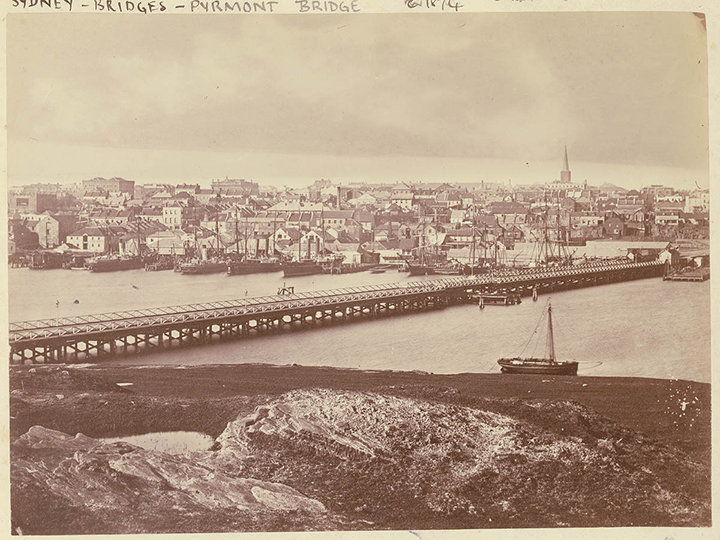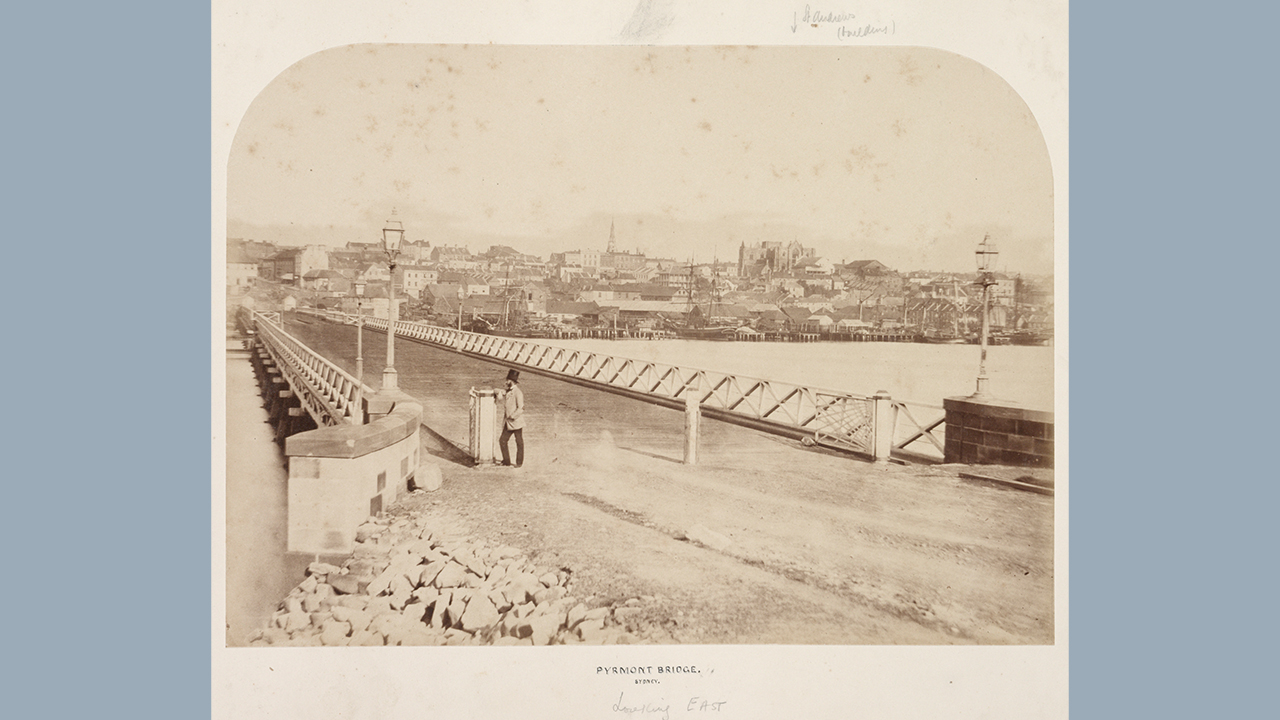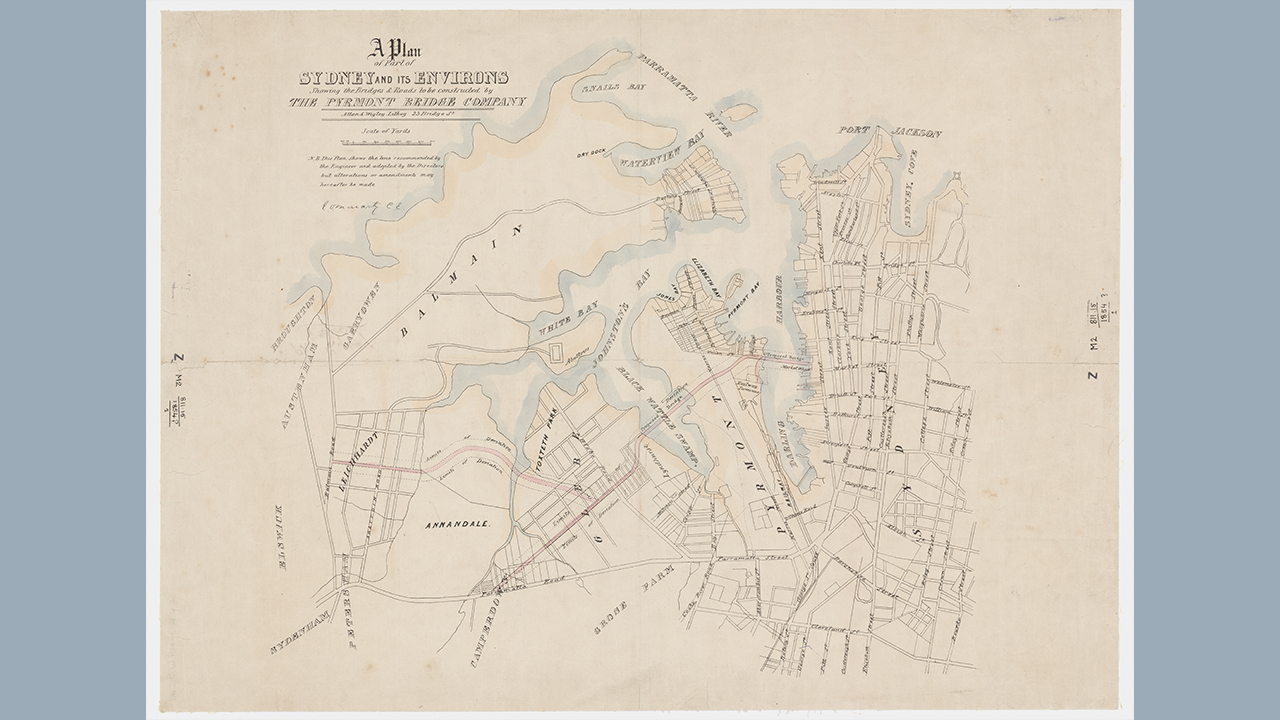In the 1850s, Sydney's Darling Harbour was a hive of activity, with its many mills, factories and shipyards.
The waterway was busy, due to shipping companies transporting goods to the rail line. Yet, the residents of the growing suburbs to the west had to travel along busy Parramatta Road to get home each day. George Allen was among those lamenting their slow commute home to Glebe. When Thomas Smith, a resident of Pyrmont, published a letter in the Sydney Morning Herald in 1852 requesting the city council build a bridge from the city to Pyrmont, George wholeheartedly agreed and became a driving force behind a private enterprise to fund the project.

The estimated cost of the bridge was £50,000, to be raised through the offer of 10,000 shares of £5 each in the newly incorporated Pyrmont Bridge Company.
So popular was the project that by the time of incorporation, £9000 was already subscribed, and within six weeks a further £4000 had been raised. At the first meeting of shareholders, George Allen became a director; a year later, he was appointed chairman, a position he held for over fifteen years. Shortly after the company was incorporated in 1855, George Wigram Allen was appointed the company's official solicitor.
Work began quickly on the wooden bridge that would stretch almost 350 metres across Darling Harbour. It was a source of pride within the colony, with the Empire noting it was 'wider than any bridge over the Thames.' The bridge included a roadway and a walkway on each side; however, the prime feature was a central swing panel, to be opened at 7am and 3pm daily, to allow ships to pass into and out of the harbour. Operated by two men turning a crank, the swing panel could be opened and closed in under a minute.
In the two weeks after the bridge opened on 17 March 1858, over 20,000 pedestrians made their way across, along with 932 carts and drays, 125 horses and riders, 43 gigs and 17 carriages. The new bridge quickly accelerated residential development on the western side of the city. A year after it opened, Glebe became the first Sydney suburb with its own council – and George Wigram Allen was appointed its first mayor.
In 1884 the government purchased the bridge, paying the Pyrmont Bridge Company £52,500. In 1899 construction began on a new electrically operated bridge, which was opened on 28 June 1902 and remains in use today.
The new Pyrmont bridge quickly accelerated residential development on the western side of the city. A year after it opened, Glebe became the first Sydney suburb with its own council – and George Wigram Allen was appointed its first mayor.

Pyrmont Bridge, 1858. Mort Family album, collection of State Library of New South Wales.

Pyrmont Bridge Company map, 1857. Collection of State Library of New South Wales.
